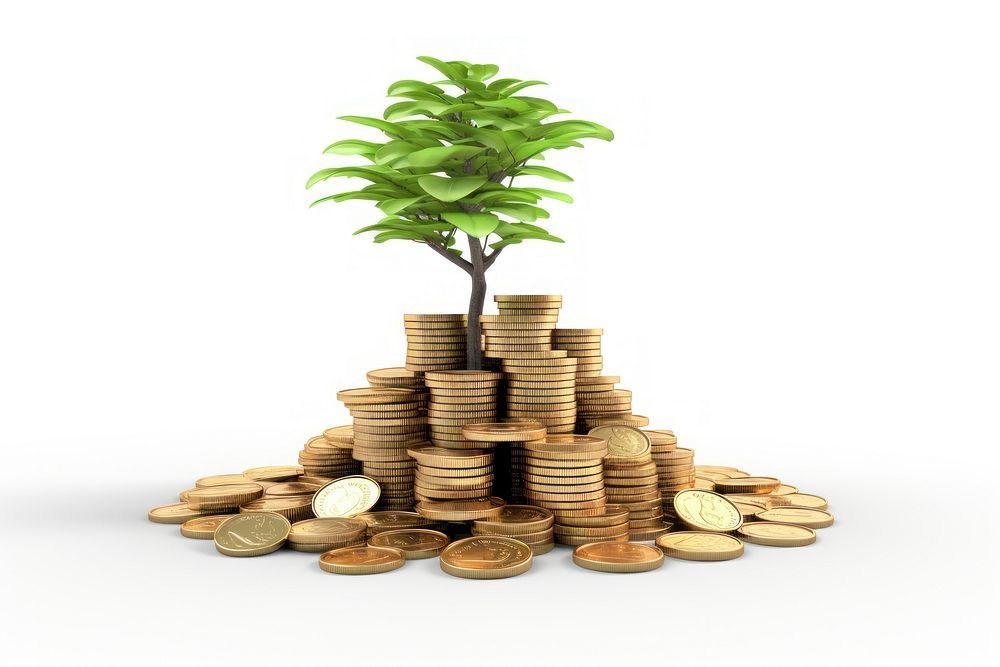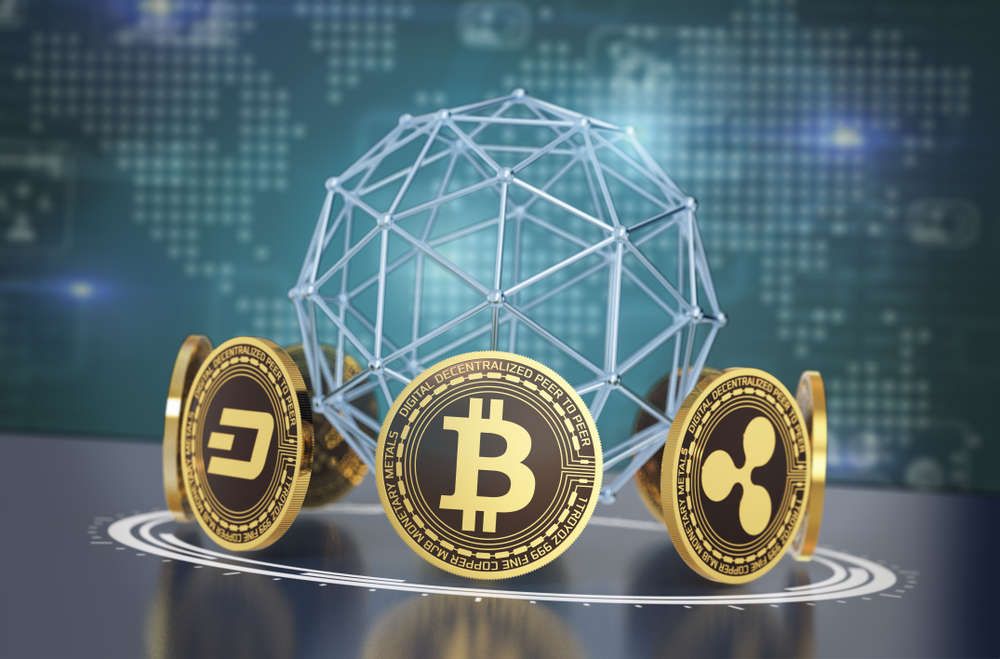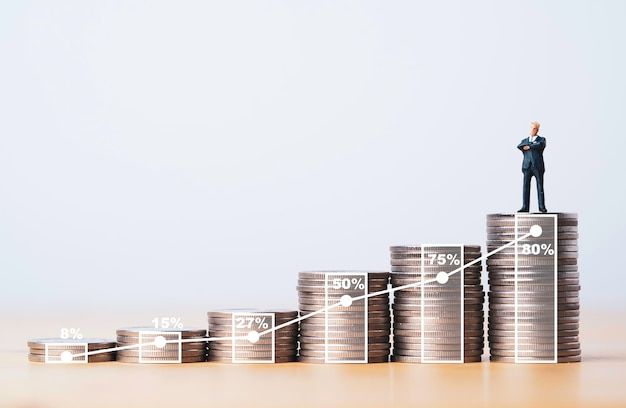The evolution and importance of money: from barter to blockchain
Money, as any item or medium of exchange representing perceived value, plays a crucial role in our daily lives. People accept it for the payment of goods and services and the repayment of loans, facilitating transactions and driving financial growth.
Economists define money, its origin, and its worth. Here are the various characteristics of money that make it a practical and essential part of our lives.
What Is money?
Money is a universally accepted medium of exchange that represents value. It plays a crucial role in facilitating economic transactions by serving as a standard measure of value, making it easier to buy and sell goods and services.
Beyond simple exchanges, money is the foundation of economies, enabling financial growth and the repayment of loans. Economists define the nature, origin, and value of money, and it is essential to understand its multifaceted characteristics to fully appreciate its role in modern economies.

History and evolution of money
Before money, people bartered to get goods and services.
Bartering was a system where two individuals, each possessing something the other needed, would directly exchange goods. However, this system had significant challenges, especially regarding transferability and divisibility.
For instance, if a person had a surplus of wheat but required cloth, they couldn’t simply find someone who wanted wheat—they also had to ensure that this individual possessed the cloth they needed.
If the potential trade partner only had shoes but also wanted wheat, a more complicated series of trades had to occur involving other participants who needed shoes and had clothes to offer.
The difficulty didn’t end there. Even after finding a trade partner, agreeing on the value of the goods being exchanged was another significant hurdle. For example, how many yards of cloth would be considered equal to a bushel of wheat?
Without a standardized measure of value, negotiations could become lengthy and contentious. The lack of divisibility also posed problems—if the wheat was worth more than the cloth, the person with the cloth might not want to give up all of it, or the person with the wheat may have had no practical way to divide their goods evenly.
Commodity money solved the problems associated with bartering.
Commodity money, a type of good that serves as currency, marked a significant milestone in the evolution of financial systems. Unlike modern fiat money, which holds value primarily because it is accepted as a medium of exchange, commodity money has intrinsic value.
For example, in the 17th and early 18th centuries, American colonists commonly used beaver pelts and dried corn as currency for transactions. These commodities were highly valued, not only because they could be used as trade goods but also due to their practical uses.
As economies and trade networks expanded, more advanced forms of commodity money emerged. One of the most notable and enduring examples of commodity money is gold.
For centuries, gold was used as a global exchange medium and backed paper currency. Countries maintained reserves of gold to guarantee the value of their paper money, creating a direct link between the value of the currency and the physical amount of gold that a country possessed.
Using commodity money like gold helped stabilize economies and facilitated international trade. Even though gold is no longer used to back currencies, its legacy continues to shape financial systems today, particularly in how we view value and wealth.
The transition from commodity money to fiat money
Gold, a scarce resource, needed help meeting the needs of rapidly growing economies. People left commodity money and started using fiat money. Fiat money is a currency a government declares legal tender, but a physical commodity like gold or silver does not back it.
Instead, its value comes from the trust in the government that issues it. The government issues fiat currency and derives its value from the government’s trust and authority.
Unlike older currencies, the value of fiat money is not backed by a physical commodity like gold or silver. Instead, its value comes from the trust in the government that issues it.
This trust-based value of fiat money is a crucial aspect of our financial system, providing greater flexibility and allowing governments to manage and stabilize the economy more effectively. This trust underpins the stability of our economic system, reassuring us of the value of our money.

Modern money: value and inflation
Today, the value of money, including the dollar and most other currencies, is mainly determined by its purchasing power, which is affected by inflation. It means that printing more money doesn’t create wealth. Money’s value comes from the balance between our need for goods, our desire for them, and our belief in what has value. Money is valuable because it lets us buy the products and services we need and want. The strength of a currency depends on the health of its economy, stable supply and demand, and the trust people place in it.

Measuring the money supply: categories and components
Money is measured as the money supply, which refers to the total amount of monetary assets available in an economy at a specific time. It includes various forms of money, such as cash, coins, and balances held in checking and savings accounts.
Understanding the money supply is crucial for economists and investors as it helps them to understand inflation (rising prices) or deflation (falling prices).
Categories of money supply
Economists and investors need to know the money supply in the economy to understand inflation (rising prices) or deflation (falling prices). To make this easier, they categorize money into three main groups: M1, M2, and M3. These categories help analyze the total amount of monetary assets available and their liquidity levels.
M1 is the narrowest category and includes the most liquid forms of money, meaning it’s ready to be spent.
It includes physical cash (coins and bills), checking accounts, traveler’s checks, and other easily accessible deposits, like savings accounts.
M2 is a broader category that includes all the money in m1
M2 includes savings and other time-related deposits, certain retirement accounts, and non-institutional money market funds. M2 represents money that can be quickly converted into cash but is not used directly for transactions. It provides a more comprehensive view of the money available in the economy.
M3, the broadest category, includes everything in m2
M3 includes large-time deposits, institutional money market funds, short-term repurchase agreements, and other significant liquid assets. M3 gives the entire picture of the total money supply in the economy, including more oversized, less liquid financial assets.
M1 vs. M2 vs. M3:
The money supply refers to the total monetary assets available in an economy at a specific time. Economists use different measures to classify this supply based on liquidity, with the three main categories being M1, M2, and M3. Each represents different levels of liquidity, from the most liquid to broader, less liquid forms of money. Understanding the differences between these measures is essential for grasping how cash flows through the economy and how financial institutions and policymakers manage it.
Key Differences Between M1, M2, and M3
The main distinction between M1, M2, and M3 lies in the level of liquidity, or how quickly the assets in each category can be used for transactions:
M1: The most liquid money, immediately available for purchases and transactions.
M2: A broader measure that includes all of M1 plus savings and near-money assets that are slightly less liquid but still relatively easy to access.
M3: The broadest category, encompassing M1 and M2, while adding larger and institutional investments that are even less liquid but still count as part of the total money supply.
The gradation from M1 to M3 reflects the transition from money frequently used in everyday transactions to larger sums that may be tied up in savings or institutional accounts but can still impact economic activity.
The role of Central Banks in regulating the money supply
Central banks play a crucial role in regulating the money supply and ensuring economic stability through various monetary policy tools. Their management of the money supply through adjustments in interest rates and open market operations, such as buying or selling government securities, is critical to maintaining the stability of our economies. Understanding these mechanisms can give us a deeper insight into the factors influencing our financial well-being.
By raising or lowering interest rates, central banks can either encourage borrowing and spending to stimulate economic growth or discourage it to curb inflation.
Additionally, central banks are increasingly exploring the development of Central Bank Digital Currencies (CBDCs), digital forms of national currencies.
CBDCs aim to enhance the efficiency and security of payment systems, provide a reliable digital alternative to private cryptocurrencies, and ensure central banks retain control over the monetary system in an increasingly digital economy. Through these measures, central banks strive to maintain price stability, promote sustainable economic growth, and ensure the overall health of the financial system.
How money is created?
In current economic systems, money is created through two main processes: legal tender and bank money.
Legal tender, or narrow money (M0)
It is the cash a central bank creates by minting coins and printing banknotes. The government directly issues this form of money, which includes physical currency in circulation.
Bank money or broad money (M1/M2)
Private banks create it by recording loans as deposits for borrowing clients. This process relies on a partial reserve system indicated by the cash ratio.
Today, most bank money is electronic and recorded on the books of financial institutions. Bank money is the most significant part of broad money in developed countries and can be converted into physical notes or used for cashless payments.
In most countries, most money is created as M1/M2 by commercial banks making loans. Contrary to some popular misconceptions, banks do not act merely as intermediaries lending out deposits that savers place with them. Instead, they create new loans and deposits independently of the central bank money (M0).
Functions of money
Money is crucial to the economy, serving several important functions that facilitate trade, maintain stability, and foster growth. Its primary job is to make transactions easier by acting as a medium of exchange, allowing people to buy and sell goods and services without the complexities of bartering. This simplifies commerce, enabling smoother and more efficient trade.
Another key role of money is that it serves as a unit of account, which means it helps us measure and compare the value of goods and services. By standardizing prices, money provides a common measure that aids in pricing, budgeting, and economic planning. This uniformity is vital for consumers and businesses to make informed financial decisions.
Money also functions as a store of value, allowing individuals to save and preserve their wealth for future use. Instead of spending immediately, people can store money, knowing its value will generally remain stable over time. This encourages savings and investment, which are essential for economic growth.
Additionally, money serves as a standard of deferred payment, meaning it allows people to make purchases today and pay for them in the future, as seen with loans and credit. This ability to defer payments enables larger transactions, promotes entrepreneurship, and fuels consumer spending, which are key drivers of economic expansion.
Properties of money
For money to effectively perform its functions as a medium of exchange, a unit of account, and a store of value, it must possess several fundamental properties:
Fungible
Fungibility means that individual units of money must be capable of mutual substitution, meaning they are interchangeable. Each unit of currency, whether a coin, bill or digital balance, must hold the same value as any other unit of the same amount. Money has uniformity, so one dollar bill is interchangeable with another, making it easy to use in transactions without needing to evaluate each unit separately.
Durable
Durability refers to the ability of money to withstand repeated use. Money must be made of materials that can endure physical wear and tear, ensuring it remains in circulation for a long time. Coins and banknotes are designed to be robust, while electronic money is stored digitally, reducing the risk of physical degradation. Durability is crucial for maintaining the value and utility of money over time.
Divisible
Divisibility means that money can be divided into smaller units to facilitate transactions of varying sizes. This property allows people to make purchases of both large and small items without difficulty. For instance, the dollar is divisible into cents, making it easy to price and pay for goods and services of any value. Divisibility ensures that money can accommodate a wide range of economic activities.
Portable
Portability refers to the ease with which money can be carried and transported. Adequate money must be lightweight and convenient, enabling people to conduct transactions wherever they go. Physical money, such as coins and banknotes, is designed to be portable, while electronic money can be transferred quickly and effortlessly through digital means. Portability enhances the practicality of money in everyday use.
Acceptable
Acceptability means that most people must recognize and accept money as a valid form of payment. For money to function effectively, there must be widespread trust and agreement in its value. This acceptance is typically established by government backing and legal tender laws, ensuring that money is recognized and used consistently within an economy.
Scarce
Scarcity refers to the limited supply of money in circulation. To maintain its value, money must be manageable. Central banks manage the money supply to ensure it remains scarce enough to preserve its purchasing power. If money were too plentiful, it would lose value due to inflation, undermining its effectiveness as a medium of exchange, unit of account, and store of value.
FAQs
What does money symbolize?
Money symbolizes various societal concepts and values, including wealth, economic power, trust, stability, freedom, opportunity, and societal priorities.
What is market liquidity?
Market liquidity refers to the ability of assets to be quickly bought or sold in a market without significantly impacting their price. High liquidity allows traders to buy and sell assets at stable prices rapidly.
What is the difference between money and currency?
Money is a broad concept encompassing any item accepted as a medium of exchange, unit of account, and store of value. Currency refers to physical forms of money like coins and banknotes issued by a government.
Who controls the money supply?
The money supply is controlled by central banks, such as the Federal Reserve in the United States, through various monetary policy tools, including interest rates and open market operations.
What is an example of a money supply?
An example of a money supply is M1, which includes the most liquid forms of money, such as physical cash, checking accounts, and traveler’s checks.


